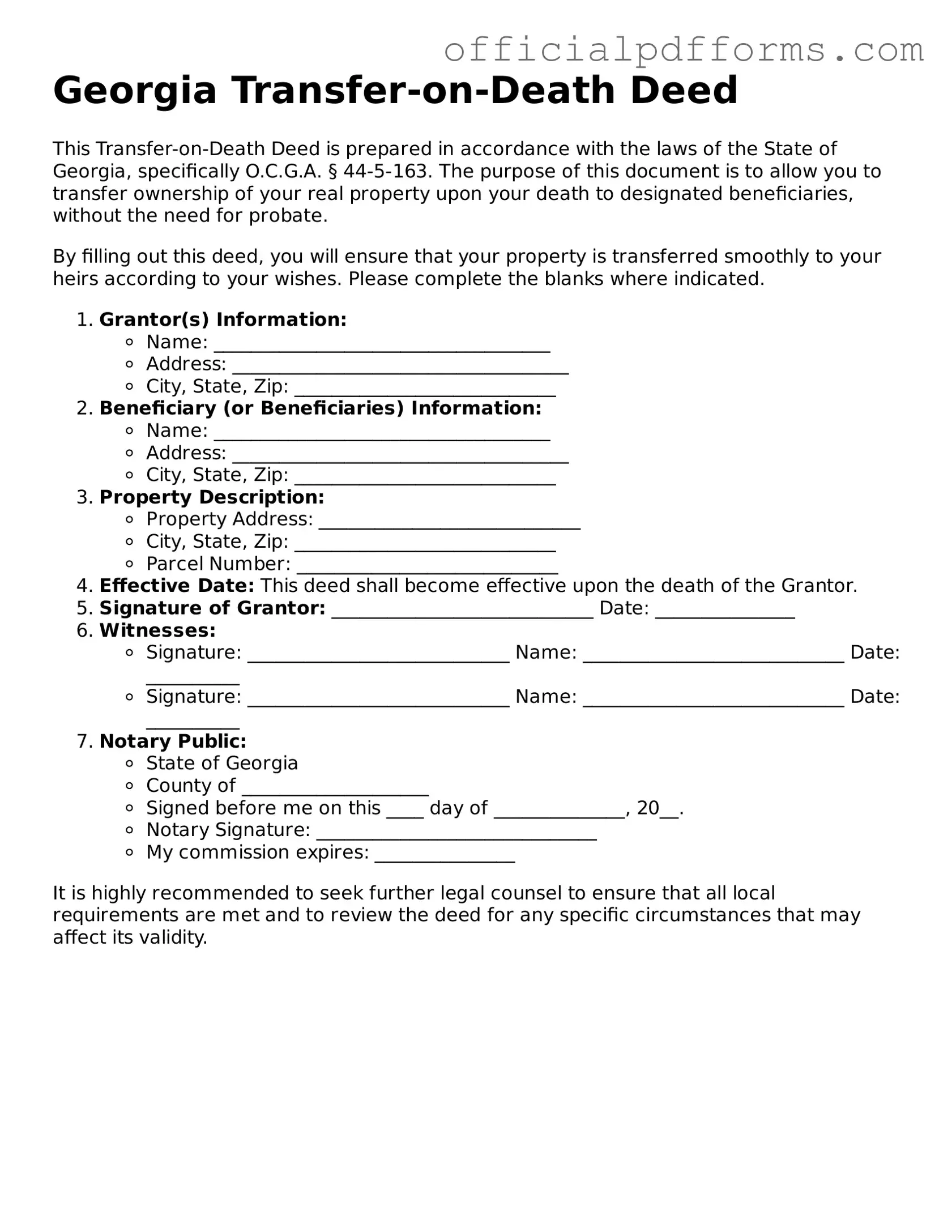What is a Transfer-on-Death Deed in Georgia?
A Transfer-on-Death Deed (TODD) is a legal document that allows property owners in Georgia to transfer their real estate to designated beneficiaries upon their death, without the need for probate. This means that the property can pass directly to the beneficiaries, simplifying the transfer process and potentially saving time and costs.
Who can use a Transfer-on-Death Deed in Georgia?
Any property owner in Georgia can use a Transfer-on-Death Deed to designate one or more beneficiaries. This includes individuals, married couples, and even entities like trusts. However, it’s important to ensure that the deed complies with state laws and is executed properly.
How do I create a Transfer-on-Death Deed?
To create a Transfer-on-Death Deed in Georgia, follow these steps:
-
Obtain the appropriate form, which is available online or through legal stationery stores.
-
Fill out the form with your information, the property details, and the beneficiary's information.
-
Sign the deed in the presence of a notary public.
-
Record the deed with the county clerk's office where the property is located.
Make sure to keep a copy of the recorded deed for your records.
Is a Transfer-on-Death Deed revocable?
Yes, a Transfer-on-Death Deed is revocable. The property owner can change or revoke the deed at any time before their death. To do this, the owner must create a new deed or a revocation document and record it with the county clerk's office.
What happens if I sell the property after executing a Transfer-on-Death Deed?
If you sell the property after executing a Transfer-on-Death Deed, the deed becomes void. The sale effectively cancels the transfer to the beneficiary. It’s important to communicate any changes in property ownership to your beneficiaries.
Can I name multiple beneficiaries on a Transfer-on-Death Deed?
Yes, you can name multiple beneficiaries on a Transfer-on-Death Deed. You can specify whether the property should be divided equally among them or if certain beneficiaries should receive specific portions. Clear instructions will help avoid confusion later.
Are there any tax implications for beneficiaries receiving property through a Transfer-on-Death Deed?
Generally, beneficiaries do not incur taxes upon receiving property through a Transfer-on-Death Deed. However, they may be responsible for property taxes and any capital gains taxes if they decide to sell the property later. Consulting a tax professional is advisable to understand any potential implications.
Can a Transfer-on-Death Deed be contested?
Yes, a Transfer-on-Death Deed can be contested, just like any other estate planning document. If someone believes the deed was executed under duress, fraud, or if the property owner lacked the mental capacity to make such a decision, they may challenge the deed in court.
Do I need an attorney to create a Transfer-on-Death Deed?
While it is not legally required to have an attorney to create a Transfer-on-Death Deed, it is highly recommended. An attorney can ensure that the deed complies with Georgia law and that your wishes are clearly articulated. This can help prevent future disputes among beneficiaries.
Where do I record the Transfer-on-Death Deed?
You must record the Transfer-on-Death Deed with the county clerk's office in the county where the property is located. Recording the deed makes it a matter of public record and ensures that your beneficiaries can claim the property without complications after your passing.
